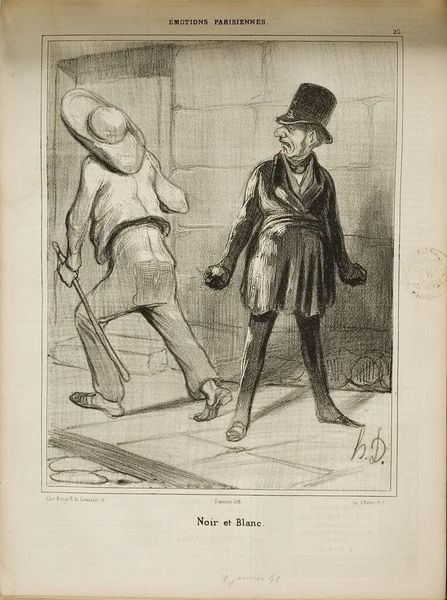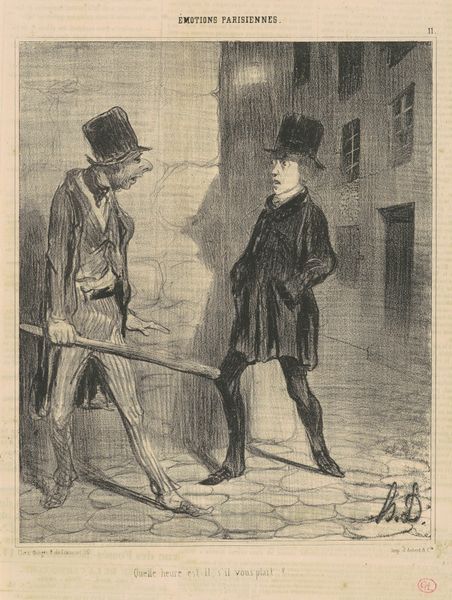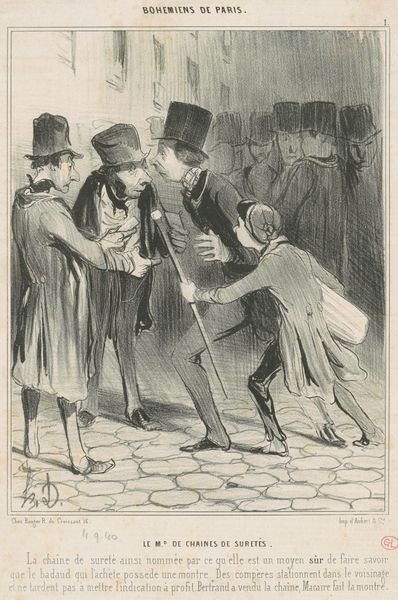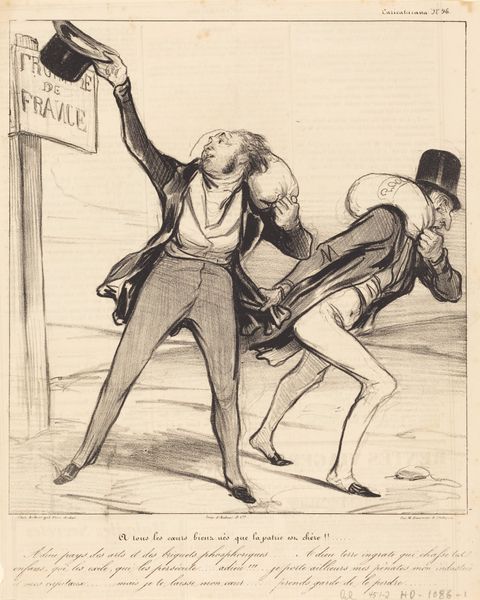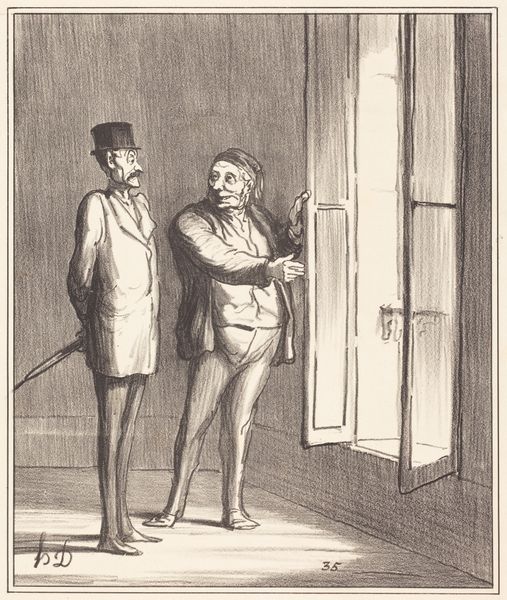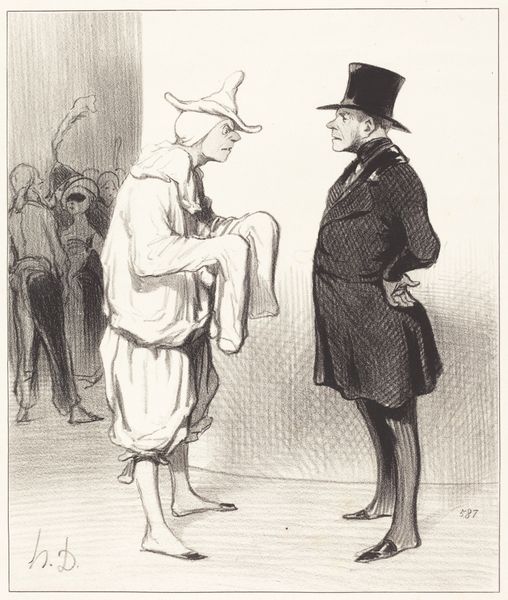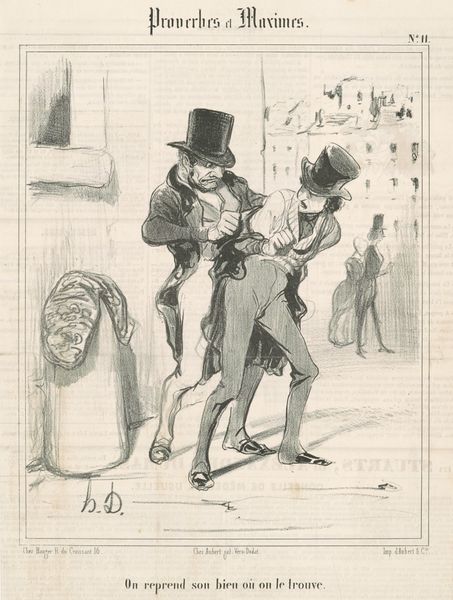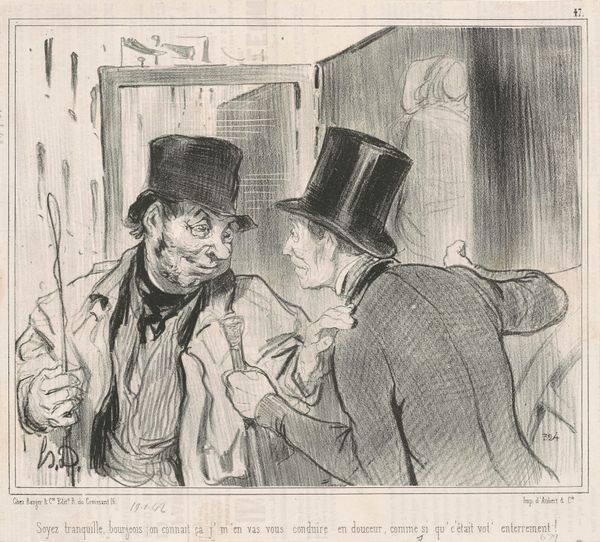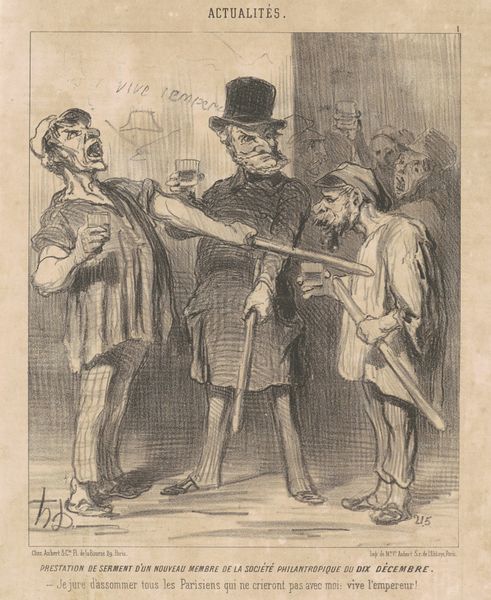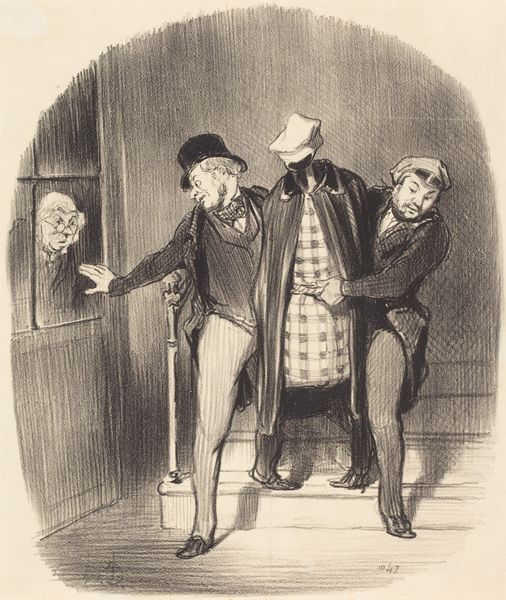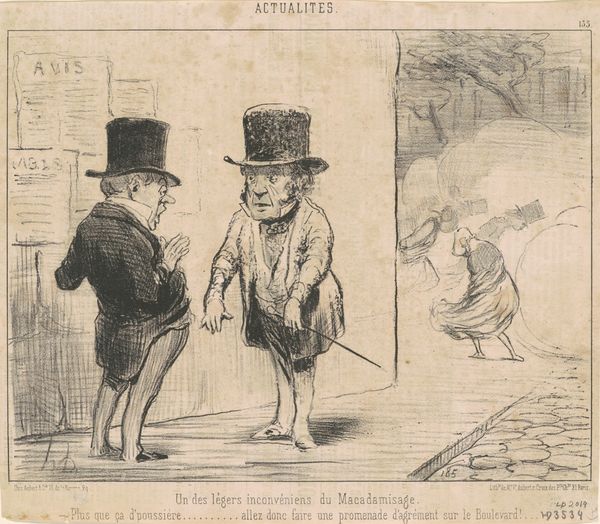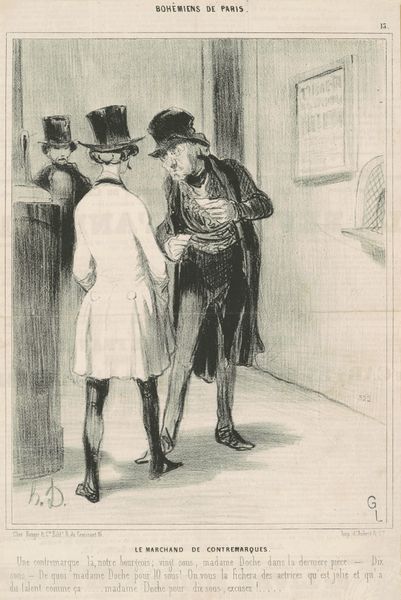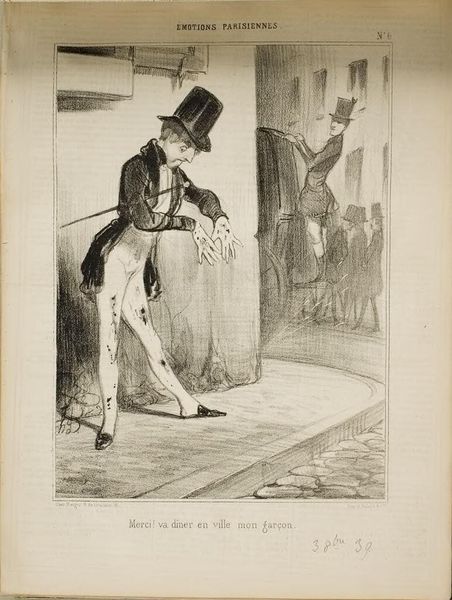
Black and white, plate 23 from Émotions Parisiennes 1840
0:00
0:00
drawing, lithograph, print, paper
#
portrait
#
drawing
#
lithograph
# print
#
caricature
#
figuration
#
paper
#
romanticism
#
line
#
genre-painting
#
history-painting
#
realism
Dimensions: 253 × 196 mm (image); 343 × 262 mm (sheet)
Copyright: Public Domain
Curator: This is Honoré Daumier's lithograph titled "Black and white, plate 23 from Émotions Parisiennes," created in 1840. It's part of the collection here at the Art Institute of Chicago. Editor: My first impression is one of awkwardness. There's a palpable sense of unease in their interaction, or lack thereof. The figures seem so self-absorbed, despite being in close proximity. Curator: It's fascinating to consider Daumier's technique here. Lithography allowed for relatively quick reproduction, making his satirical commentary accessible to a broad audience. We need to remember this was a burgeoning age of print culture. The materials used were, for their time, mass-produced, allowing wide circulation and influencing public opinion. Editor: Precisely. And that accessibility underscores its social impact. This print circulated during a politically turbulent period in France. Daumier consistently used his art to critique the bourgeoisie. What social commentary do you see specifically evoked in "Black and White?" Curator: Look at the exaggerated features. The body language is clearly derisive. This piece seems a pointed comment on class divisions. The title itself, "Black and White," speaks volumes about the rigid societal structure. The craftsmanship required to create this kind of nuanced social critique within the technical constraints of the printmaking process is what fascinates me most about the lithograph itself. Editor: I think this artwork challenges traditional power structures within the art world. Think of the academic painting held up on a pedestal by wealthy elites during the time. It depicts everyday people rather than historical or mythological figures. Curator: It is also fascinating to look at the economic realities of producing art and how Daumier navigated them. He chose an affordable medium for the people so they could buy his message directly. Daumier's clever re-appropriation and re-deployment of the printed form challenges traditional notions about "high art" versus accessible, working-class productions. Editor: Yes. The museum exists today to make such artwork accessible. Daumier used this print, a means of mass communication, to provoke social reflection. By showcasing the starkness of societal differences, Daumier prompted discourse and challenged the existing power structure. He democratized art, really. Curator: So true. Looking at the production, accessibility, and material composition offers an enriching insight into the message. Editor: Absolutely. Considering the museum’s role in presenting work like Daumier’s opens an important perspective for a contemporary audience.
Comments
No comments
Be the first to comment and join the conversation on the ultimate creative platform.
